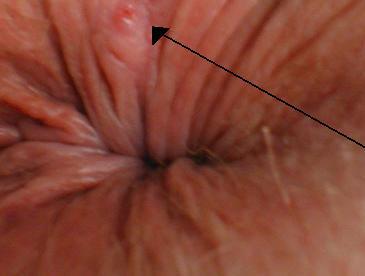
ALSO KNOWN AS
Perianal abscess, anal abscess, or rectal abscess
DESCRIPTION
* Stool formed in the colon or large intestine empties into the rectum and the anal canal then exits through the anus. Perianal refers to the structures around the anus (skin) and within the anal canal. The walls of the anal canal above the anus contain anal glands that secrete lubricants. Stool contains waste material and many bacteria. If there is a cut or scratch in the skin around the anus or the walls of the anal canal, bacteria can enter and cause an infection. The infection then causes local swelling, irritation, tissue damage, and fluid buildup (abscess).
SYMPTOMS
* Unable to sit comfortably
* Difficulty or pain with passing stool
* Redness or pain around anus
* Abscess felt around anus or within anal canal
* Peri-rectal swelling
* Pain may be throbbing, sharp, or dull
* Fever may be seen in severe case
* Bleeding or discharge if abscess is drained or accidentally ruptures.
* In elderly there maybe no fever only lower abdominal pain
* If the abscess ruptures and leaves a fissure that opens into the anal canal, a fistula is formed.

CAUSE
* Bacteria:
1. Staphylococcus
2. E.coli
3. Streptococci
* Proteus vulgaris
* Pseudemonas aeruginosa
* Bacterides
* Usually a mixture of above
HOW THE DIAGNOSIS IS MADE
* Need examination by a doctor
* If abscess is in the canal, the doctor may need to insert his index finger in the canal (digital rectal exam) and feel for it.
* If fever is present and the patient appears sick, blood samples may be taken to assess the severity of infection.
* Barium Enema -- an enema used to pour a chalky substance called barium through the anus into the rectum for X-raying. This will help if the abscess cannot be felt, or if a fistula is present.
* Sigmoidoscopy -- a rigid tube inserted into the rectum allows the doctor to look inside.
RISK FACTORS
* Cuts:
1. From food such as egg shell and fish bone
2. Swallowed objects, such as rings, coins, paperclips
* Penetrating injuries:
1. Constipation
2. Enema
3. Vibrators
4. Anal sex
5. Light bulbs
6. Bottles
7. Surgical injection of hemorrhoids
* Diseases:
1. Hemorrhoids (hang out from the anus opening)
2. Inflammatory Bowel Disease
3. Granulomatous diseases such as Sarcoidosis
4. Weakened immune system (body's defenses) -- cancer (specially of blood), AIDS, etc.
TREATMENT
* May need admission to the hospital if very sick, elderly, have other diseases or need surgery.
* Pain medication -- Tylenol, Motrin, Codeine.
* Stool softeners or laxatives to prevent Constipation.
* Good diet with high fiber diet -- adequate amount of oil, fruits, vegetables, and fruits.
* Avoid enemas and rectal temperature.
* Antibiotics may be administered intravenously (through veins).
* Surgery:
1. Local small abscesses can be cut and drained on an outpatient basis.
2. Deeper abscess and fistulas need to be opened, drained, and removed in the hospital under general anesthesia.
3. The wound is then packed with gauze soaked in Iodoform, an anti-bacterial agent for 24-48 hours.
4. Sitz baths are recommended every 2-4 hours to remove debris.
5. Warm compresses help with pain.
IF YOU SUSPECT THIS CONDITION
* See your doctor for a digital rectal exam.

SIMILAR CONDITIONS
* Crohn's Disease
* Rectal tumors or cancers
* Infections:
1. Syphilis lesions or ulcers
2. Tuberculous ulceration


No comments:
Post a Comment